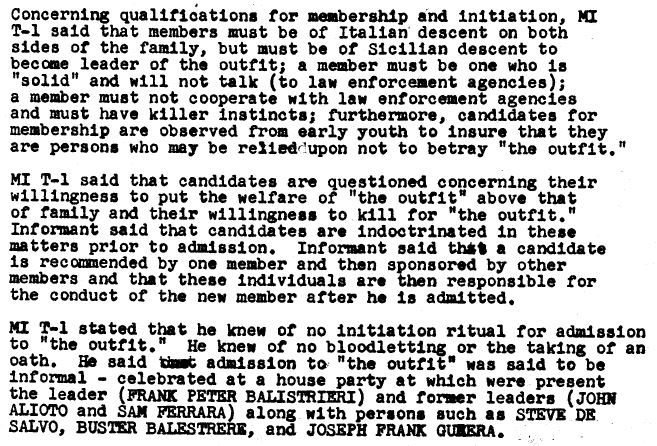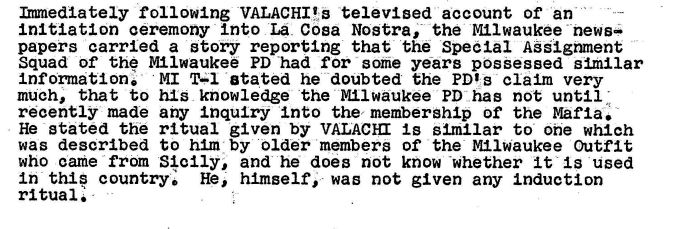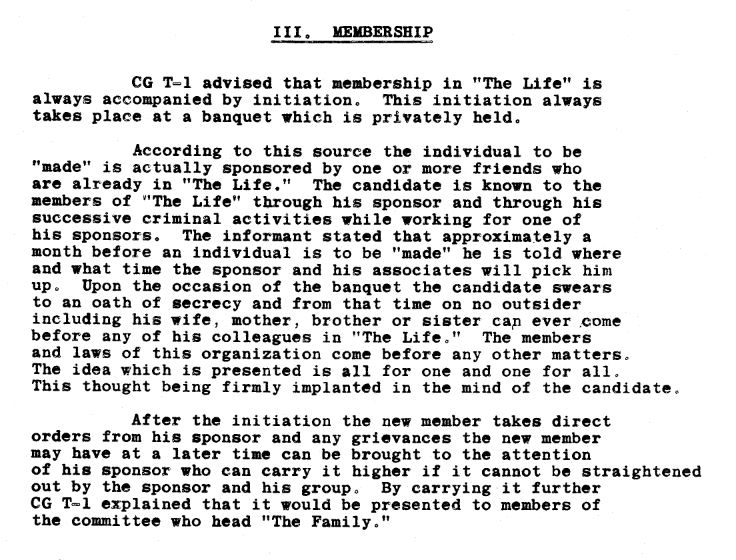Great info on Paolo DiGiovanni. We’ve probably talked about it before, but I’ve suspected, based on DeRose’s claim, that the DiGiovannis in the Northside, the Heights, and KC may have all been linked to the 1940s conflict. Finding out that DiGiovanni had close personal ties to Burgitani adds another potential layer to these likely connections. Not that those ties are surprising or unexpected in the least, as Chiusa Sclafani directly borders Burgio (as it does Palazzo as well).B. wrote: ↑Thu Jul 28, 2022 1:02 am Never noticed that about Maniaci's induction. They'd be another one of the traditional Sicilian style Families who stopped using the ceremony.
---
Was looking something up and saw that early KC boss Paolo DiGiovanni lived in Chicago before he went to Kansas City.
- Paolo DiGiovanni's 1906 naturalization in Chicago was witnessed by Giuseppe DiGeorge and Nick Buccola. DiGiovanni arrived to the US in 1900 with an Alfonso DiGiorgi from Burgio. DiGiovanni was arriving to New Orleans while DiGiorgi was going to NYC -- seems likely DiGiorgi is connected to DiGiovanni's friend "DiGeorge" in Chicago. DiGiovanni's Family in KC had important people from Burgio, like Ferrantelli who Nick Gentile talked about.
- DiGiovanni was still in Chicago through 1913, when a daughter was born. He was in Kansas City by 1917. He was at or around 40 years old when he left Chicago and quickly became KC boss so I think we can safely say DiGiovanni was an early Chicago member. This also makes two members that left Chicago and quickly became Missouri bosses -- DiGiovanni of KC and Pasquale Miceli of St. Louis. Miceli was from Burgio so he was likely no stranger to DiGiovanni.
- DiGiovanni's hometown Chiusa Sclafani forms a triangle with Burgio and Palazzo Adriano. There's documentation showing Paolo DiGiovanni was well-acquainted with guys from Burgio in Sicily, Chicago, and Kansas City. It seems equally likely he'd have known mafiosi from Palazzo Adriano -- the DiGiovannis / DeJohns of Chicago come to mind. Hard to imagine these two mafia clans named DiGiovanni from neighboring villages weren't familiar with one another in the midwest, assuming there's not a relation somewhere.
- DeRose said along with Nick DeJohn being part of the rebel faction in the Cheese War, the rebels had support from Chicago Heights and Kansas City. Sam DiGiovanni seems like a likely participant in the Heights but you have to wonder who in Kansas City may have been involved. With the KC DiGiovannis having history with Chicago that's one possible connection.
Some notes to consider.
Nicola DiGiovanni of the Heights (Sam’s brother; ID’d by the Feds as a member) was married to a woman, Martha Bullaro, whose family relocated from downstate Williamson County to Little Sicily; her mother was a Miceli from Burgio (Martha’s brother John Bullaro died in Colorado Springs in 1931, not sure if whacked).
Phil Bacino’s father, Giovanni Bacino, was born in Burgio to Burgitani parents. Giovanni’s paternal grandmother was an Antonina Miceli from Burgio.
There were DiGiorgio/DeGeorges in Chicago from Chiusa Sclafani. Worth noting that a Nicolà DiGiorgio, born 1895 in Chiusa Sclafani, lived on Wabansia near Wolcott in the Bucktown/Wicker Park neighborhood on Chicago’s Near NW side in 1917. This was in the immediate vicinity of the “home base” of the LoLordos and (Riberesi) DeGeorges (and paesani the Dianas and D’Angelos) at North Ave and Wolcott. While there may have been no kinship connection (the DiGiorgio surname could be coincidence, as Jim DeGeorge’s ancestry was all from Ribera), it can be assumed that these Riberesi at least had social ties to some Chiusesi. That they had ties to Burgitani (which one would predict anyway, apart from Bacino’s direct Burgio ancestry), is indicated by the fact that Jim DeGeorge, his brother Calogero (who for all we know was an old time Chicago member; he died in ‘95), and Patsy LoLordo were suspects in the 1922 murder of roommate Vito Fondanetta, of Burgio, at North Ave and Wolcott.


